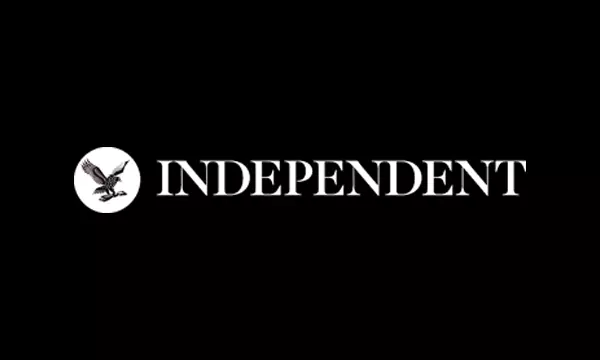I was waiting to fall. I’d been on the ice now – my first time ever in full hockey gear – for half an hour, waiting to tumble over. I knew it was coming: there was no way I was going to avoid it. And as I skated over the red line, back straight, knees bent and stick on the ice, as per my instructions, I tried to stop. My right foot bent inwards, and I felt the weight of my entire body fall on that right leg.
I blinked and went ass over teakettle on to the ice. Jordan Rose, my patient instructor from the Central Hockey Academy in Toronto, skated over to me.

“If you’re not falling,” he says with a smile, “you’re not trying.”
Although it was a lesson I’d learn time and time again in my first hour on the ice, that’s when it was brought home with the most force: hockey is so much harder than it looks.
“Nobody wants to fall,” says Jordan afterwards. “But the more you fall, you get a better understanding of how you’re supposed to do it the next time. You get up, you get nice and low, two hands on your stick and getting comfortable in your stride. It’s all about being comfortable with your edges, being comfortable on your feet and getting comfortable with it.”
Throughout my entire life, my relationship with hockey has, at times, been anything but comfortable.


For the past two years, for a variety of publications – including this one – I’ve covered hockey as a journalist. I grew up in Oshawa, Ontario, a city that boasts more junior hockey championships than nearly any other in Canada. Some of the greatest players in the modern game, from Bobby Orr to Eric Lindros to John Tavares, plied their trade in my home town.
And I was not one of them.
Although I’d watch the game religiously, being raised in part by German immigrant grandparents meant I played soccer. Eventually, I played the game year-round and became something of an outcast in my hockey-mad city. My love of the game of hockey didn’t decrease, but my understanding of it didn’t improve either.
Years later, while writing mainly about the personalities within the National Hockey League (NHL) and other leagues, I’d keep my dirty little secret to myself: I’d never actually donned full hockey gear and played.
The Central Hockey Academy runs regular classes for beginners, and Jordan empathised with my feeling of isolation at never having played the game: “All their friends play in adult leagues,” Jordan says, after I ask why most beginners want to learn the game.
“Hopefully they can get the hang of it and jump on the ice with their buddies, right? That’s usually all it is. People might get a little jealous, right? Why not come out and get a few tips.”



In Canada, millions of children grow up watching hockey on television. Many corporations have tried to hijack that perfect image of Canadiana: that of a young child staring wide-eyed at players moving at top speed, almost effortlessly, on ice. Many Canadians become so attached to the sport that hockey becomes less of a game and more an idea that you aspire to surround yourself with.
But effortless, hockey is not: perhaps the reason for ice hockey’s lack of worldwide attention is not the lack of frozen water elsewhere, but the skills required to be any good at it.
Canadians, I suppose, buy into hockey because it encompasses everything that the country of Canada does: it is both liberating and challenging. Lacing up (three loops around the shin) a pair of skates, then hitting a fresh sheet of ice and taking those first few strides straddles the line between a cliched coffee chain advertisement, and, well, flying.

Jordan and I went through three basic elements of the game: skating, passing and shooting. And in just an hour on the ice, I learned enough lessons to stay with me for what will hopefully be many years back on the ice.
Lesson one: it’s all in the legs
Generally, when we think of freakishly large legs in athletes, cyclists come to mind. But in my time speaking to players in hockey dressing rooms, I’ve also encountered a few sets of legs like tree trunks. Google smallish winger “Martin St Louis legs” and you’ll get the picture.
And after just one hour on the ice, I can see how this happens.

Through a variety of skating drills that Jordan put me through, I heard the same two instructions barked over and over: “Bend your knees! Get lower to the ice!” And therein lies the key to attaining any speed while skating. Take the pressure off your legs and you’ll slow down.
Canadians learn this young, of course – the country is blessed with (literally) thousands of rivers and lakes that freeze over in the winter and make for a perfect and perfectly leisurely Sunday afternoon skate.
Lesson two: cradle the egg, or how to pass and receive the puck
As easy as it looks on TV, like everything else in hockey, passing is way harder to actually pull off when you’re on the ice.
Passing the puck (or receiving it) is all about maintaining a balance: hold your stick too firmly when receiving a pass and the puck will bounce off; but pull your stick back too far when cradling a pass and you’ll lose any forward momentum you have when skating.



Likewise, if you send a pass too close to the receiving player, he or she will lose any momentum they have. But send it too far ahead and you’ll just be giving the puck away.
One of the most common complaints I hear from people who don’t come to the game is how difficult it can be to follow the small, black puck on the ice during a TV broadcast. On the ice, however, my eyes were glued to the puck. The course of play can change so quickly and I’d argue that no game features players that hound for one small object the way hockey players do. Passing is the great equaliser, the skill that allows even the smallest of players to evade the giants on the ice.
Lesson three: look, load, explode
Since I started covering hockey professionally, goals have become more commonplace. But they were never the sole reason to watch a game: there was so much occurring elsewhere on the ice to follow.
And once you factor in the amount of “garbage goals” in every game (an actual term used to describe goals scored by a scrum in front of the net), you begin to hold shooting and scoring in less of a high regard.

What I can tell you now, however, after receiving just a few pointers from Jordan on shooting and then trying to put those pointers into practice, is that shooting the puck is what transforms hockey into an art. Many elements of the game are incredibly difficult to perfect, but shooting is more so. Knees must be bent to attain power. Your stick must hit the puck at a ferocious speed, but also with pinpoint accuracy. Oh, and you have to beat an agile goalie wearing enough equipment to leave just slivers of openings.

Jordan’s rules were simple: look at your target, load your body and stick in a variety of set angles, and then unleash with as much power as possible.
For the first five minutes, shot after shot sputtered into the goalie prop, while those I did raise from the ice went well wide of the net.
Hockey is no different from many other sports in that many players start playing the game because they want to be the person featured on the highlights: they want to be the goal scorers. Here, finally having my first try at the game, I was no different: I just wanted to put one past a fake goalie before leaving the ice.


After one of the many fruitless shots, Jordan asked me if I was ready to call it a day.
“Not yet,” I said, desperately trying to catch my breath. “I want to get just one in.”
“Alright,” he replied. “I like the enthusiasm.”
I think he probably meant to say foolishness, but I’ll let it slide. Jordan gave me his billionth pointer of the day: “Move your left hand a little lower on the stick. You’ll get more power that way.”
At the other end of the ice, a pint-sized goalie was getting private instruction from a former pro. I watched him bend, flop and work tirelessly to master the little things that make hockey come together on the ice. I exhaled.
With one deep breath, I picked a spot behind my goalie, beyond his condescending smile, looked down at the puck, hoped for the best, and unloaded a shot.
Somewhere between his left pad and catcher, that fake goalie missed a beat. The puck hit the back of the net; and I smiled.
“Not bad at all!” shouted Jordan. “You may be ready for a men’s league now!”







